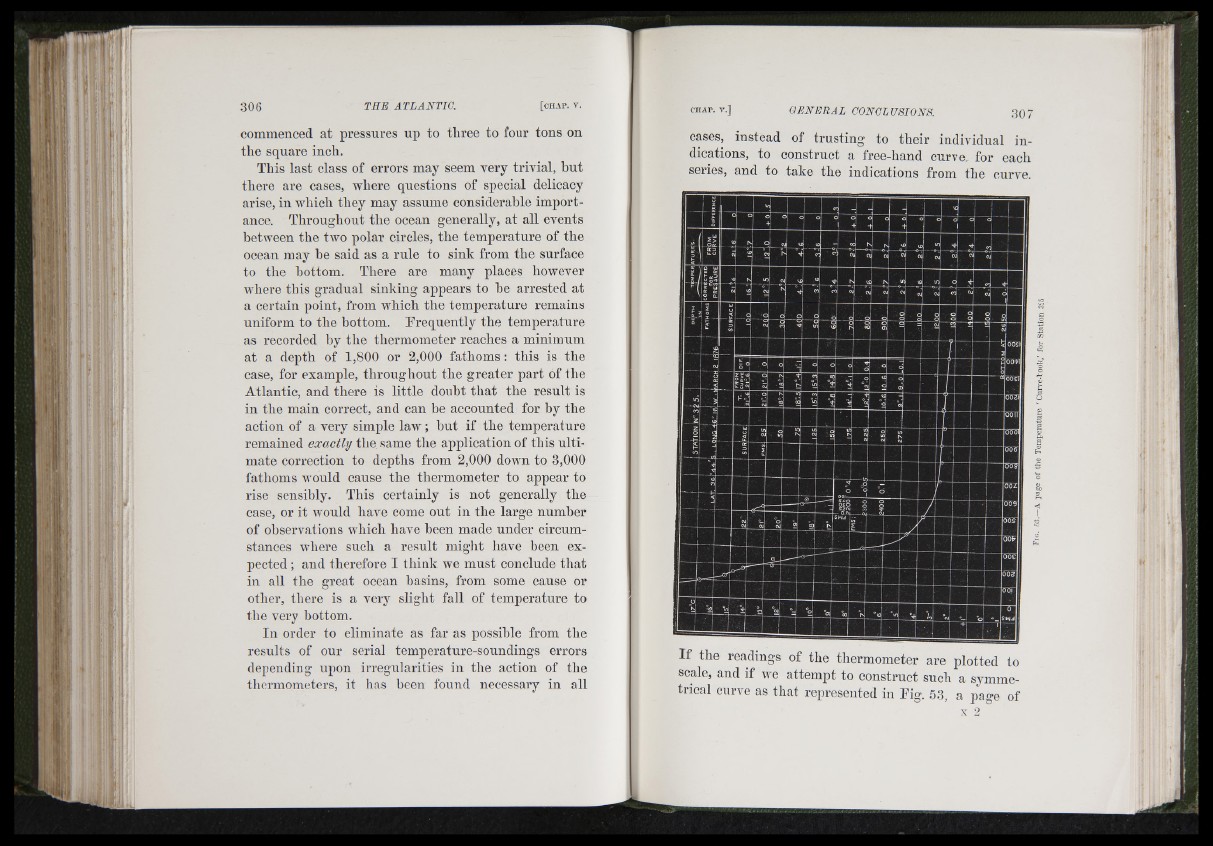
ri
■IV'
il: .!
£ r
ÌÌ; '
to :&!
f (.1 ii 'tf''
toll
I. r
ii
commenced at pressures up to tbree to four tons on
the square inch.
Tbis last class of errors may seem very trivial, but
tbere are cases, vrbere questions of special delicacy
arise, in wbicli tbey may assume considerable importance.
Througbout the ocean generally, at all events
between the two polar circles, the temperature of the
ocean may be said as a rule to sink from the surface
to the hottom. There are many places however
where tbis gradual sinking appears to be arrested at
a certain point, from Avhich the temperature remains
uniform to the bottom. Frequently the temperatnre
as recorded by the thermometer reaches a minimum
at a depth of 1,800 or 2,000 fathoms : this is the
case, for example, throughout the greater part of the
Atlantic, and there is little doubt that the result is
in the main correct, and can be accounted for by tbe
action of a very simple law ; but if the temperature
remained exactly the same tlie application of tbis ultimate
correction to depths from 2,000 down to 3,000
fathoms would cause the thermometer to appear to
rise sensibly. This certainly is not generally the
case, or it would have come ont in the large number
of observations which hai'e heen made under circumstances
Avhere such a result might have been expected
; and therefore I think we must conclude that
in all the great ocean basins, from some cause or
other, tbere is a very slight fall of temperature to
the very hottom.
In order to eliminate as far as possible from the
results of onr serial temperature-soundings errors
depending upon irregularities in the action of the
thermometers, it has been found necessary in all
cases, instead of trusting to their individual indications,
to construct a free-hand curve for each
series, and to take the indications from the curve.
I f the readings of the thermometer are plotted to
scale, and if we attempt to construct such a symmetrical
curve as that represented in Fig. 53, a page of
\- 2
irl